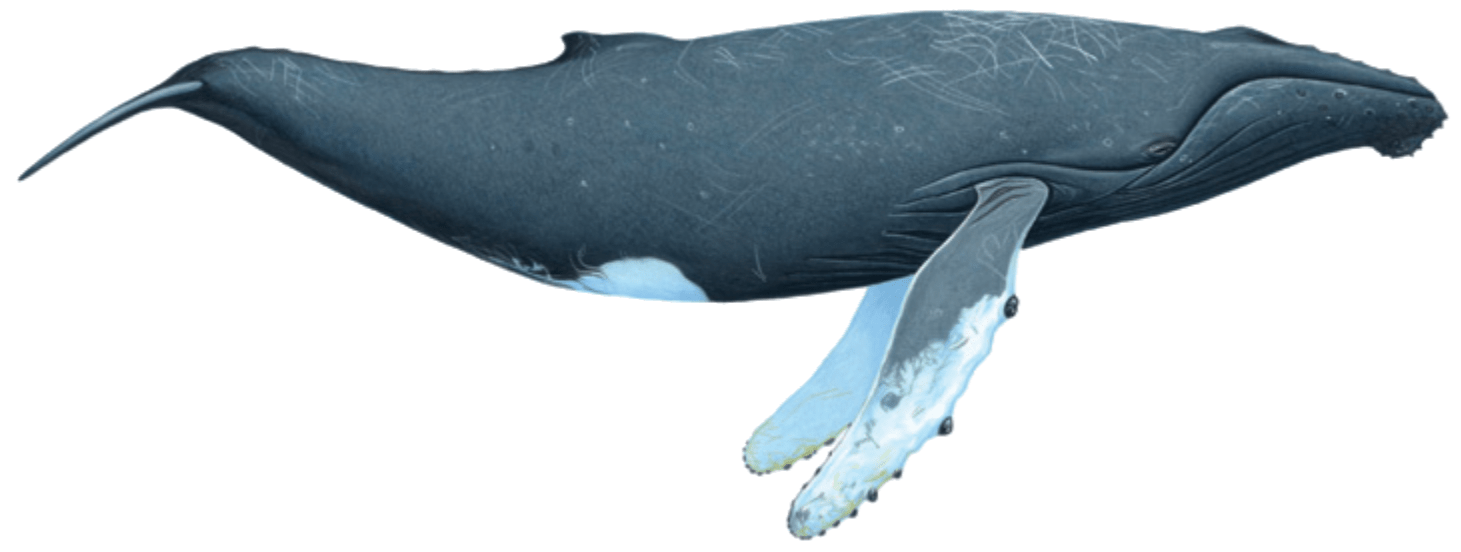
A pelagic species of baleen whale, measuring up to 15 metres in length. Black or dark grey dorsally, sometimes paler ventrally, with long, predominantly white pectoral flippers. The head is slender and covered in fleshy tubercles (lumps). The low dorsal fin is set well back on body.
In the North Atlantic population calves are born in the Caribbean and off Cape Verde at just over 4 metres in length in the winter, after an approximately 11 month gestation period. The species is found in small groups and feeds on krill and a variety of shoaling fish.
Humpback whales are found across the North Atlantic. They are opportunistic feeders and range far to find food and have been seen increasingly around the UK and Irish coasts in recent years.
The global population is thankfully recovering from the days of intensive whaling. Individuals are returning here more frequently and can sometimes be viewed from shore.

Humpback whales are both a pelagic and coastal species, but they are often entangled in fishing gear or caught out by tidal movements.
BDMLR has successfully released entangled humpbacks in Scotland, Devon and even as far as Iceland thanks to our specialist Large Whale Disentanglement Team. However, we have also been called to humpbacks live stranded on the shore as well.

A whale, dolphin or porpoise stranded on the beach is obviously not a usual phenomenon. These animals do not beach themselves under normal circumstances, and they will require assistance. Please DO NOT return them to the sea as they may need treatment and or a period of recovery before they are fit enough to swim strongly.
BDMLR RESCUE HOTLINE:
01825 765546 (24hr)
or
RSPCA hotline (England & Wales): 0300 1234 999
SSPCA hotline (Scotland): 03000 999 999
You will receive further advice over the phone, but important things you can do to help are:
If you find a dead cetacean
The Cetacean Strandings Investigation Programme (CSIP) collects a wide range of data on each stranding found on English and Welsh shores, whilst the Scottish Marine Animal Strandings Scheme (SMASS) does the same for Scotland. If you discover a dead animal, please contact the relevant hotline and give a description of the following where possible:
Digital images are extremely helpful to identify to species, as well as ascertaining whether the body may be suitable for post-mortem examination.
CSIP has produced a useful leaflet that can be downloaded by clicking here.
CSIP hotline (England and Wales): 0800 6520333.
SMASS hotline (Scotland): 07979245893.